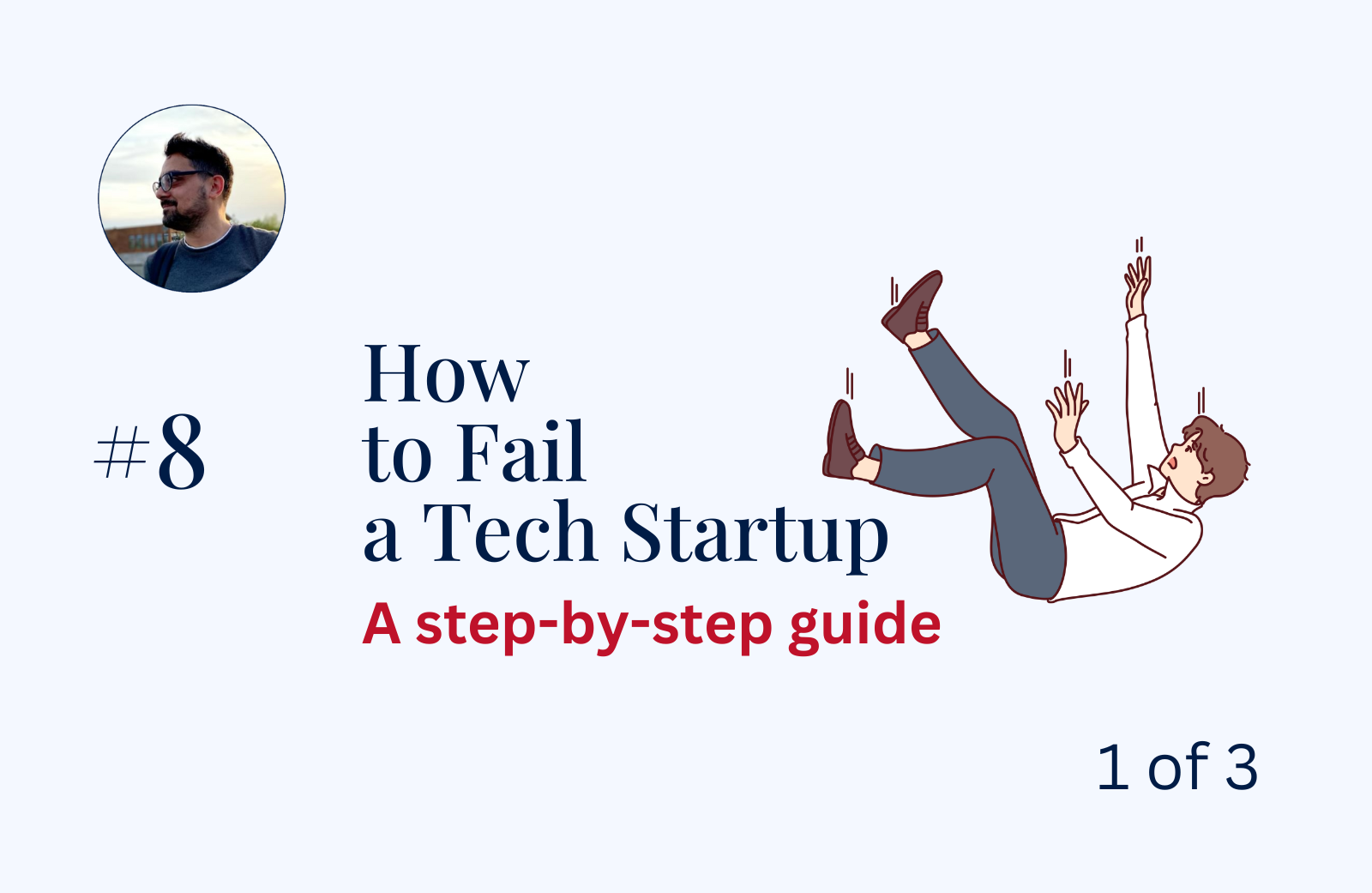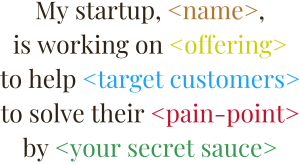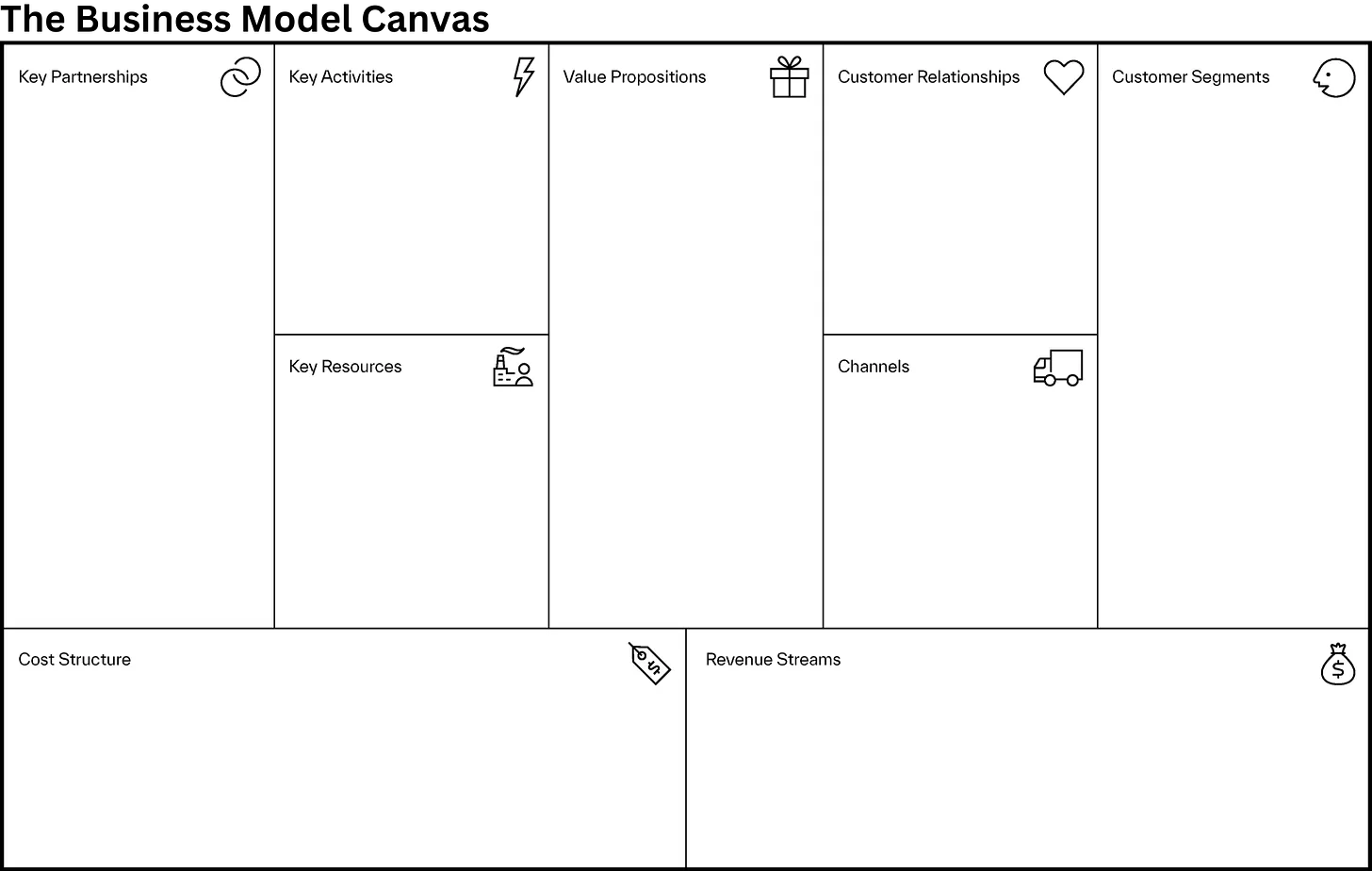
12 Jun How to Fail a Tech Startup: A Step-by-Step Guide – Part 1 of 3
Jun 12, 2024
Introduction
In this article, I’m going to share the story of a startup I founded years ago that, unfortunately, ended in failure. I’ll detail all the obstacles I faced, my attempts to solve them, the reasons for the failure, and the lessons I learned.
As the subject is quite extensive, I’ve split the article into three sequential publications – this is part 1 of 3. The second part will be published this Thursday (June, 13th) and the third part next Wednesday (June 19th).
So, if you want to know how to fail your business – keep reading. If you want to know how not to fail your business – keep reading.
Bare in mind that the lessons outlined below are relevant to startups exploring new frontiers. They don’t apply to businesses selling products or services with proven demand, and that have been well-known for decades – for example, selling bottled water.
Let’s start!
The Business Idea
The Trend
It was the year 2015, and I had just moved to the Isle of Man, British Islands. For those who don’t know, this island hosts one of the most dangerous motor races in the world – the TT, which stands for Tourist Trophy.
It was the boom of crowdfunding platforms like Kickstarter and Indiegogo, or at least that’s when I discovered this new world. A team with an idea can reach the world and ask people to fundraise for them in exchange for something – usually a product or a perk.
The Inspiration
A few months later – after moving to the island – I found the book “What’s Mine Is Yours: How Collaborative Consumption is Changing the Way We Live” by Rachel Botsman.

In this book, the author envisions a world where collaborative consumption of resources and assets is the norm. In this world, physical items are used without the need to own them; instead, they can be rented or exchanged for another item you possess. Also, in this world, we have collaborative lifestyles where people with similar interests band together to share and exchange less tangible assets such as time, skills, and space.
So, I was thinking, if Kickstarter and Indiegogo are platforms where companies and teams present their idea and raise funding from the crowd because they’ve won their trust and inspired them with an idea, why not build a platform where you can attract not just money but also assets like time, skills and tools?
Imagine it like this: In your neighbourhood, there’s a football field that has been abandoned for a long time. You really would like to restore it — to cut the grass, paint the benches, and simply renovate it so that your kids and the kids in the neighbourhood can play there. Unfortunately, the local municipality does not have the resources or the desire to do that now.
What if you could publish a campaign where you present your idea to the world and, depending on what your goal is, ask for physical assets, volunteers, funding, etc.? For instance, to renovate the football field, you might need 10 volunteers for a week, $1000 to buy paint, and ideally a grass cutter if someone has one to share. Of course, I oversimplify the example but you get the point.
I thought this was a great idea and it would definitely succeed because it could make the world a better place. Imagine a world where people can easily unite their efforts and achieve a common goal – like planting trees or renovating a building for homeless people.
The Journey
Stage I – The First Action
The Name
I began to imagine how successful such a platform could be due to the immense impact it could bring. I was truly inspired and decided that I was going to build it.
One of the first tasks I set myself was to come up with a suitable name for the platform.
I was particularly fond of the “gogo” in the name “Indiegogo”, as it sounded motivational to me. Given that the focus of my platform was centred around people, I decided to name it Peoplegogo.
Fortunately, the domain name was available, so I immediately purchased peoplegogo.com. To be honest, at that time, I didn’t consider aspects like patent rights or trademarks. I mention this as I’m not sure how Indiegogo would react to the similarity of the names.
For those who have done this before — buying a domain name — know how difficult it is to find a good name with a free .com extension. Open a website like name.com and just try. Soon, you will realise how many hours you have spent and how many tears you have shed. So, if you are planning to start a business and you find a good domain name with a free .com extension, buy it immediately because it won’t be free for long!
Lesson:
- Choose the name of your startup business carefully. A friend of mine, who was living in London back then, started a startup company for email marketing. A few months later, he was contacted by a British company asking him to change his business name as it violated the trademark rights they held. Infringing on someone’s rights isn’t that difficult considering how saturated the market is with trademarks and companies.
One-Sentence Pitch
The next things I wanted to do is to come up with a well-written one-sentence pitch that explains my business.
The reason I decided to craft a well-formulated one-sentence pitch was because of a meeting I had with an ex-colleague of mine, Mark Rogers, who was running an IT company in Sofia, Bulgaria at the time. In our meeting, Mark emphasised the importance of this one-sentence pitch. He explained that once you articulate it to someone else — potentially an investor — they would understand what your business is about and whether it’s worth their time to listen further.

I struggled a lot.
It was very difficult to formulate a single sentence that explains everything. That is partially because I wanted the platform to do many things. I wanted to offer users the option to organise their own campaigns, to organise themselves in groups — similar to Facebook groups — to have the option to communicate with each other via an internal messenger (providing the option for calls, group chats, etc.). I had tons of features in my head that I wanted to develop because I thought that people will need them.
Do you see any issue with what I have just said? Let me explain; the user does not care about the features you offer, they care about the problem you solve. I did not think from that perspective initially because I was approaching it with the mindset of a software developer, who by definition thinks in terms of features and well written code. If we want to craft an effective one-sentence pitch, we should shift our mindset to that of an entrepreneur.
On one hand, the one-sentence pitch should focus on the problem you solve for the user, and on the other hand, it should communicate to potential investors where the revenue will come from.
After a lot of struggle – as I mentioned – I finally came up with two versions:
Meet like-minded individuals who utilise their skills and funding for social campaigns that enhance the lives of those around them and foster community engagement.
and
Peoplegogo is a platform that empowers individuals to rally around shared interests, connecting human talent, skills, and resources with projects that need them.
Today, reading these sentences and putting myself in the shoes of someone who is not familiar with the idea, I would get even more confused. Back then, I didn’t realise that.
You might also notice that I completely overlooked the practice of creating a one-sentence pitch (look at the image above).
I was imagining how I would build the platform and it would be successful, which actually led me to a few key mistakes:
- Believing too much in an idea can make you “blind,” stopping you from evaluating the situation objectively.
- If you cannot formulate a crystal clear one-sentence pitch, that means you don’t truly understand your business and what you are doing.
- Because I was too caught up in dreaming about how the platform would solve social problems, I missed one of the most important points — how am I going to make money?
In short, if you want to fail your startup, do the following:
- Believe blindly in your idea and do not brainstorm it with anyone. Be consistent in your believe that the business you work on solves a problem that will be appreciated by people.
- Even if you brainstorm your idea and you receive feedback that gives you the feeling that the person in front of you does not quite understand what you are talking about – ignore that feeling.
- Do not think about how your business is going to generate a stable revenue stream. Money is not important!
These three mistakes were not clear to me back then, so I decided to continue my work. Let’s move on and get the next dose of failures.
Stage II – The Business Plan
It’s not my first attempt at starting my own business, so I was aware of the need to sit down and write a business plan. And I did just that. I wanted the business plan to be as detailed as possible — to present my idea, build the customer’s profile, analyse the market, figure out how to sell and market my product, make a list of potential competitors, outline the revenue streams, and so on.
Spoiler alert: My day job was as a developer, not as an entrepreneur.
So, I made a mistake. I thought that the longer the business plan, the better. I ended up writing a plan that was nearly a hundred pages long. I wondered — who on earth is going to read that? But I thought it was important.
Well, here’s the catch. Writing a business plan is an expensive task. Why? Let me explain.
The world today is different from how it was a hundred years ago. A century ago, the volume and complexity of information were much lower, making it feasible for the human brain to analyse available data. One could analyse — provided they had access to information sources — and write a business plan for the next 5 or 10 years. Back then, the pace of change was much slower compared to what we experience today.
Today, the world is far more complex. There’s an abundance of information and disinformation with a much higher volume, and processing all of it is far beyond the capabilities of a single human brain. Therefore, when it comes to business planning, we can plan, of course, but making predictions even for a few months ahead is difficult. Thus, you don’t need a long business plan but rather a short one that serves as a framework describing your business and an action plan.
Long business plans are for large corporations that have the financial resources to invest in extensive analysis and make projections about the future, including geopolitical situations, years in advance. Therefore, a real business plan is for big-money players.
If you want to fail your startup, do the following:
- Write an extensively long business plan and spend as much time as possible and postpone the actual work.
The real lesson here is:
- Draft a brief plan or guide: what are you offering, what resources do you have, who are your competitors, who is your target customer, how will you sell your product or service, and how will you generate revenue. For a startup business, consider using the ‘Business Model Canvas’.

Continue the Journey
Continue the journey in the second part of the series – “How to Fail a Tech Startup: A Step-by-Step Guide – Part 2 of 3“.
